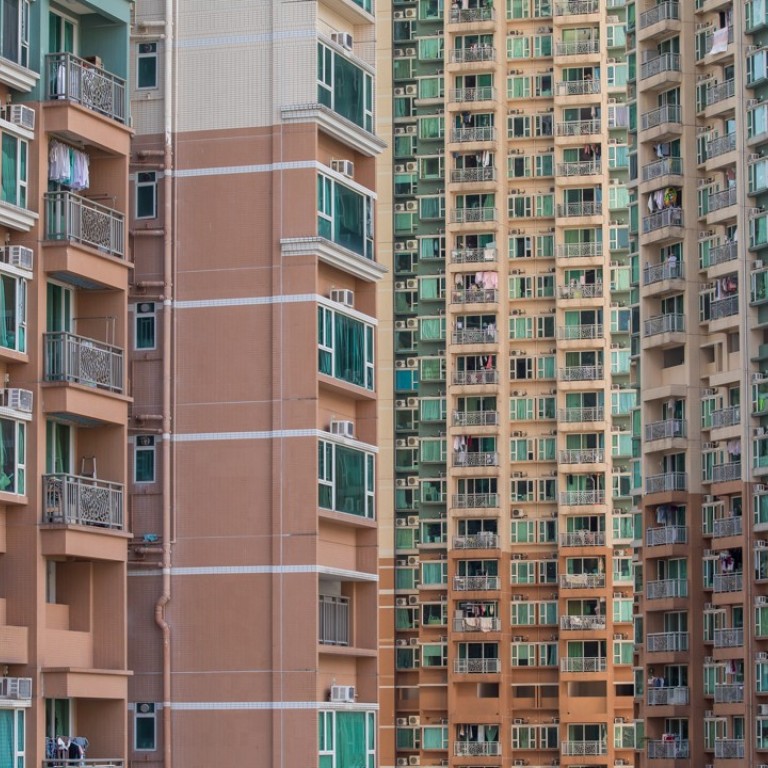
Free-market failure: Hongkongers need the government to fix the housing crisis, now
Mike Rowse says the trend towards smaller and smaller flats, and higher and higher prices needs to be arrested now. The government must ban non-permanent residents from buying a property, and enforce a minimum flat size - ideally not less than 700 sq ft
What kind of society have we created, I asked myself, where a major corporation could in all seriousness tell our young professionals that the residential flat they deserved to own was smaller than a reasonably sized parking space?
How much longer will it be – or could it be that we have already crossed the threshold – before a farm animal in Europe protected by animal welfare laws is assured of a living space greater than a Hong Kong resident’s?
Next came anger. What kind of government could oversee such a system and not explode into decisive political and administrative action? Whatever happened to the public housing programme and all those fine home ownership ideals?
Finally came concern. How long would it be before the victims of such a system became so furious that they rose up one night and overthrew it? Hong Kong people can be apathetic about many political and social issues, but even the mildest resident will reach breaking point if pushed too far. And 123 is several square feet too far.
The trend has been visible for some time, of course. Over the years, the size of residential dwellings offered for sale in the private sector has drifted from the 1500 sq ft mark to a 1,000-1,200 sq ft range, then 700-800 sq ft, and 500-600 sq ft.
In recent years, the pace of decline has quickened and we seem to have gone from 350-400 sq ft to below 200 sq ft in the blink of an eye. Flats that used to go on the market for the aspiring lower-middle class are now being offered as luxury premises – and, at HK$25,000 per square foot and up even in parts of the New Territories, who could argue with that description?
So I have to wonder if anyone in the Hong Kong government has yet made the link between youthful disaffection, and the surge in the development of micro flats.
Columnists are often criticised for being long on complaints and short on constructive suggestions. Well here are two ideas that can be implemented quickly, in time for the chief executive’s policy address next month.
First, we should follow New Zealand’s example and introduce a ban on non-permanent residents buying residential property. I know the arguments against such a policy – Hong Kong is a free market, there are ways round the ban, enforcement is difficult, etc – which are all valid, but I’m sorry, this is an emergency.
Secondly, we should set a minimum size for all new residential properties. There will be all the usual arguments against interference in the free market, and then failure to agree on what the number should be.
Watch: How buying a first home differs in Hong Kong, Singapore, Shanghai, London and Guangzhou
In the short term, it can be argued that such a stipulation would slow down solutions to the housing crisis because we would get fewer flats in any given area of residential development. But I think such arguments overlook a deeper problem. We will soon be asking the Legislative Council and our whole community to spend billions of dollars on increasing the supply of land.
There are only really two solutions here that matter: resuming and developing large areas of agricultural land and brownfield sites in the New Territories, and undertaking additional reclamation (though whether it is better to focus on adding to existing reclaimed lands, or going for an East Lantau Metropolis is still open to argument). Both will be expensive and time-consuming.
The Task Force on Land Supply will soon announce the results of its public consultation exercise. Assuming it steers clear of populist solutions that don’t really make a difference in the overall scheme of things (and that is a bold assumption in the present climate), the government will soon face some tough choices.
The work of the task force was recently discussed on an RTHK radio talk show. How can we support any option to spend so much money, one caller asked. The developers will buy up all the land at auction, build luxury flats for outsiders, then set prices so high the most we locals can afford is a shoebox.
It is hard to say he is wrong. On the contrary, I can think of 123 reasons why he might be right. And the argument that we should not interfere in the market has been overtaken by events: what we have is a case of market failure and the government has a duty to step in.
Mike Rowse is the CEO of Treloar Enterprises. [email protected]

